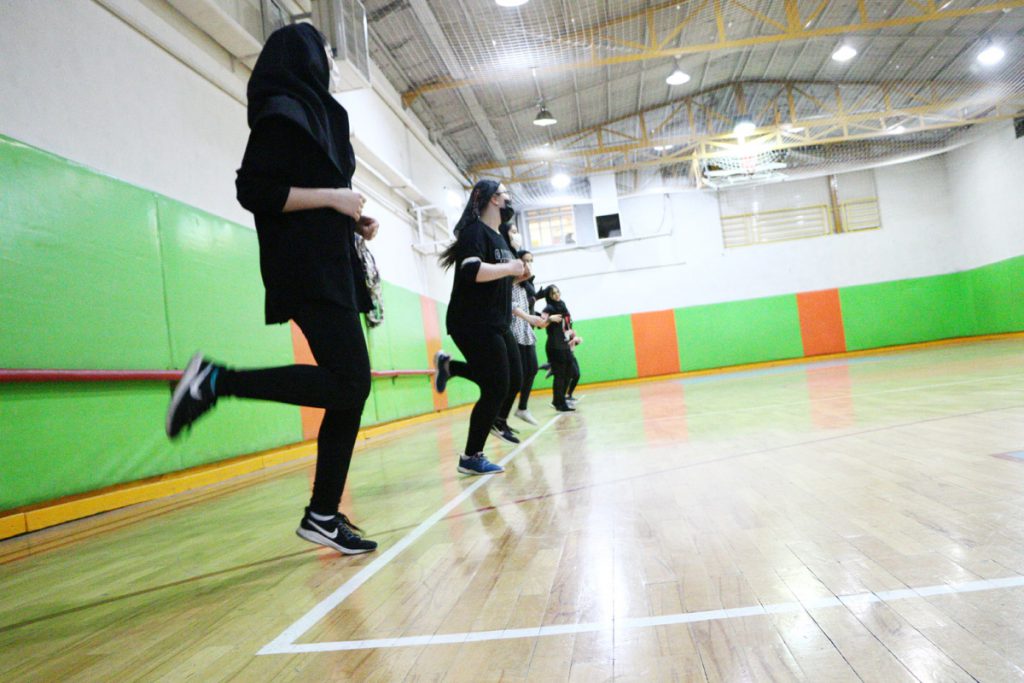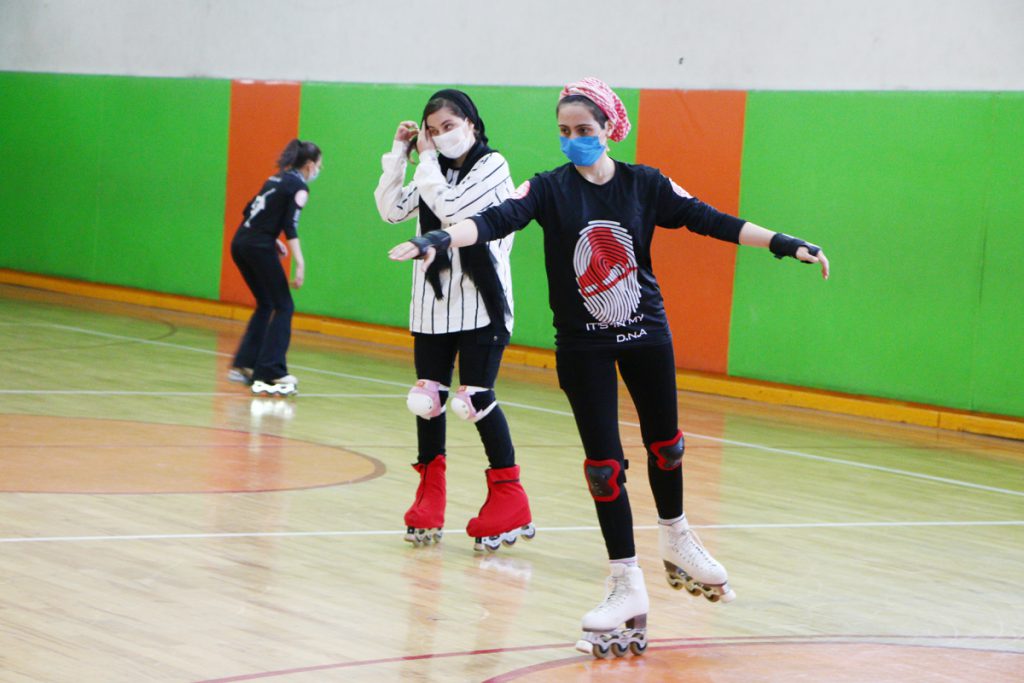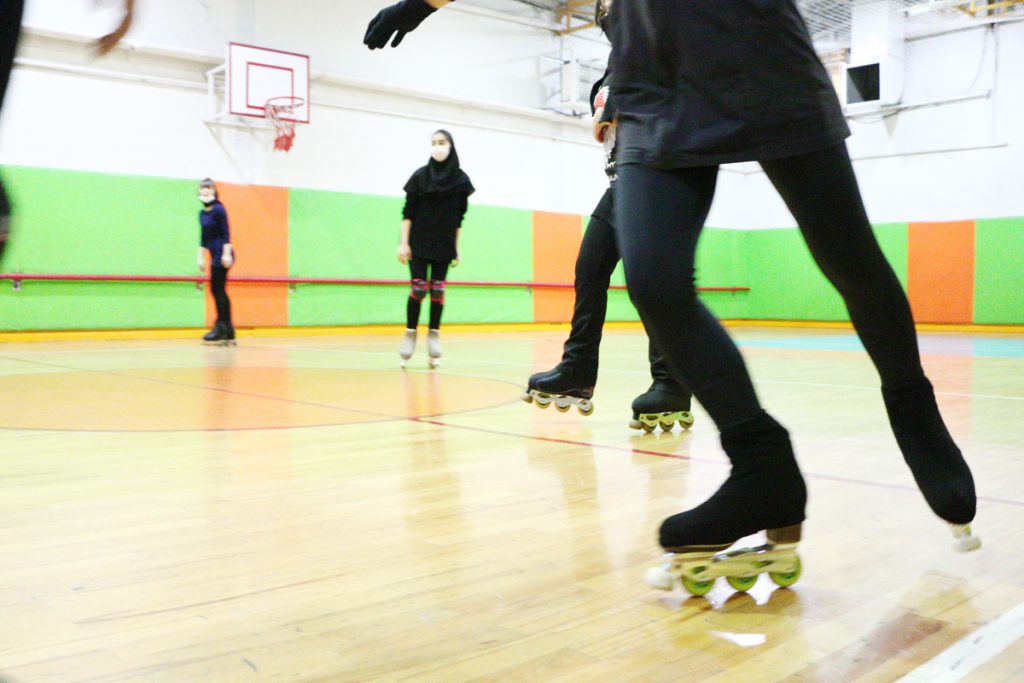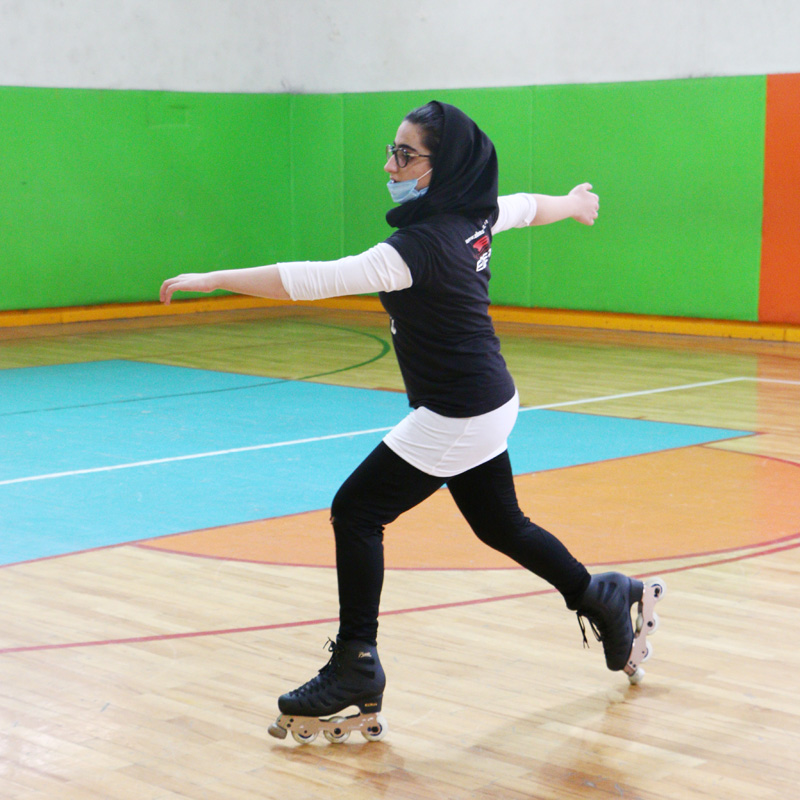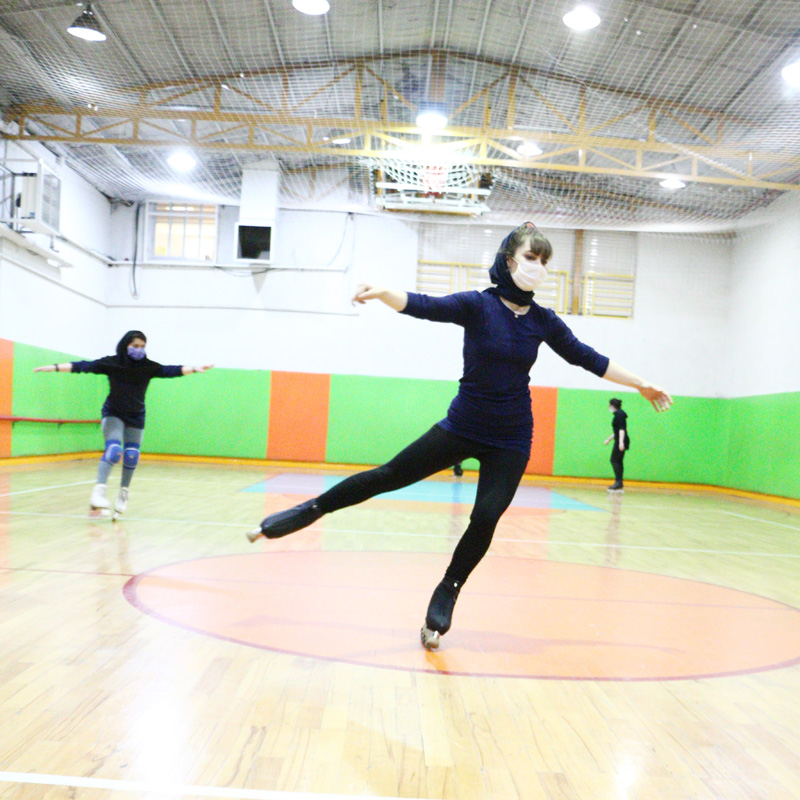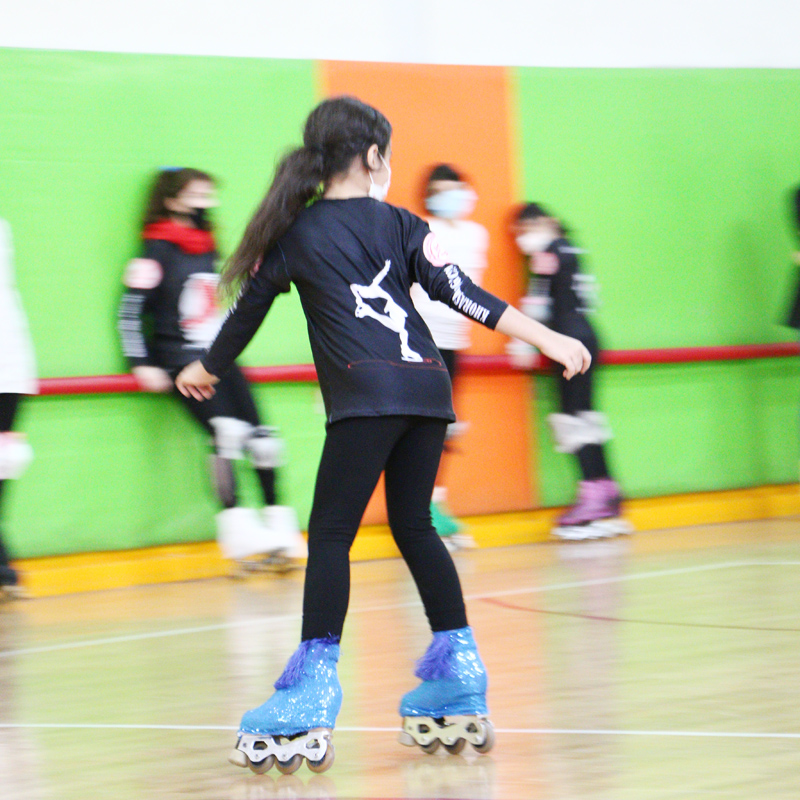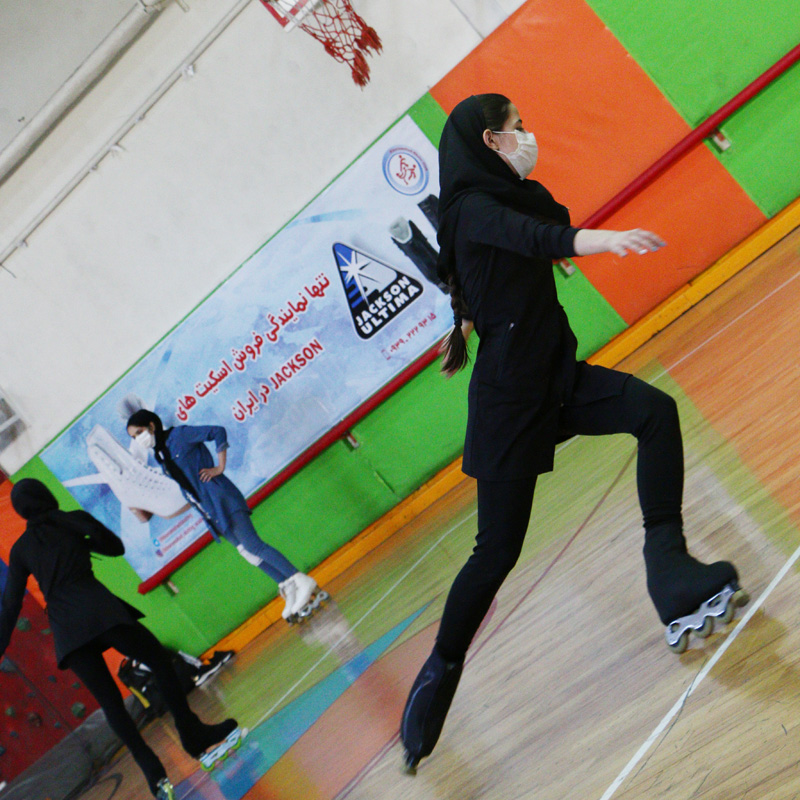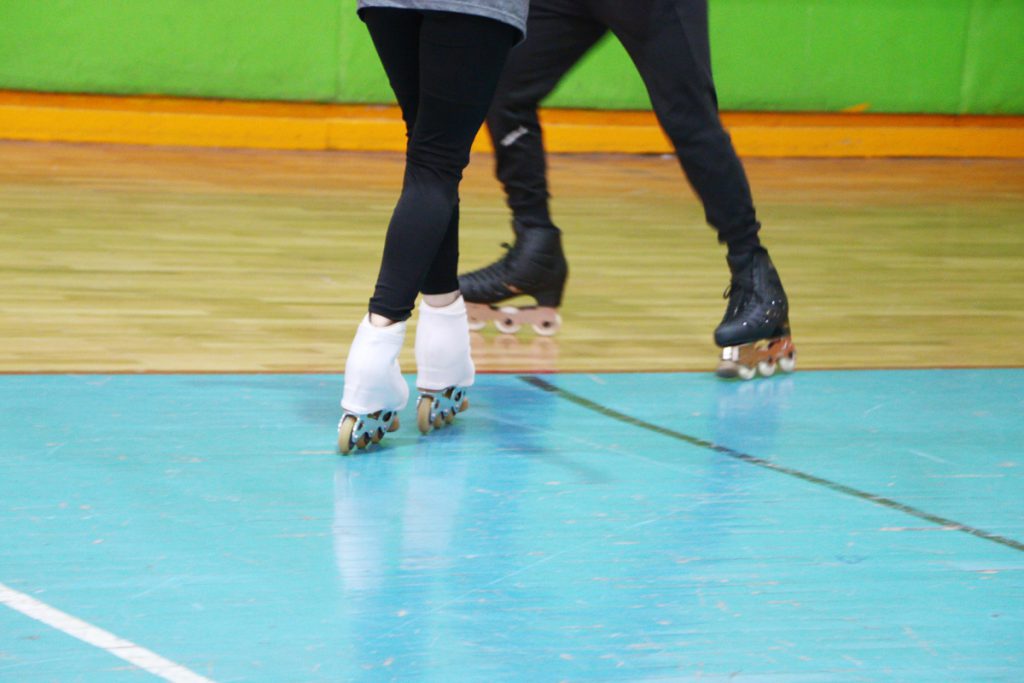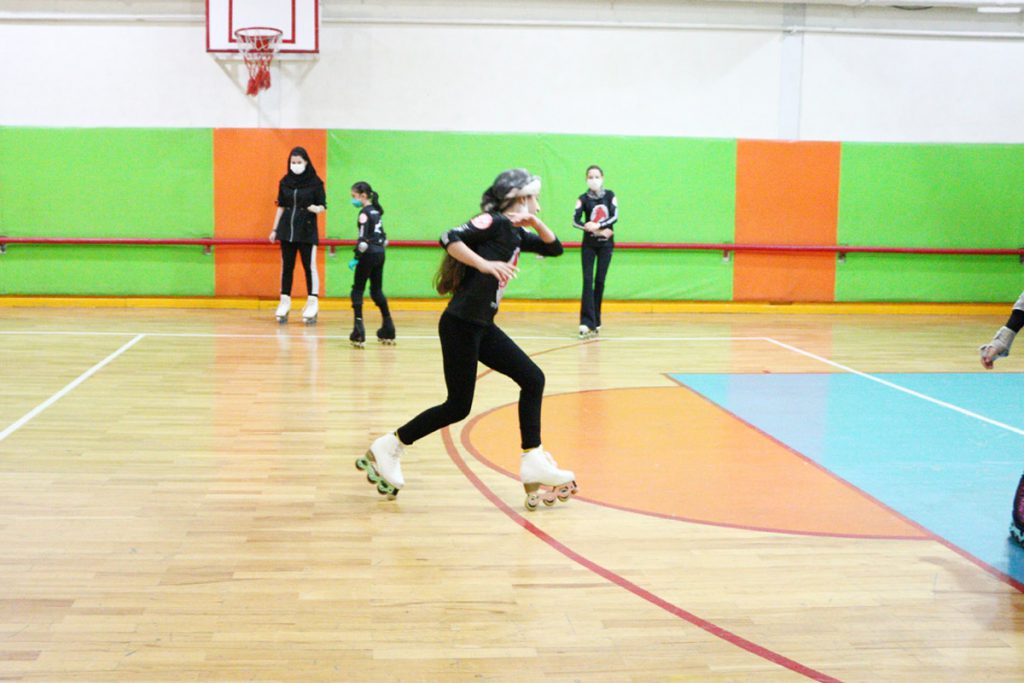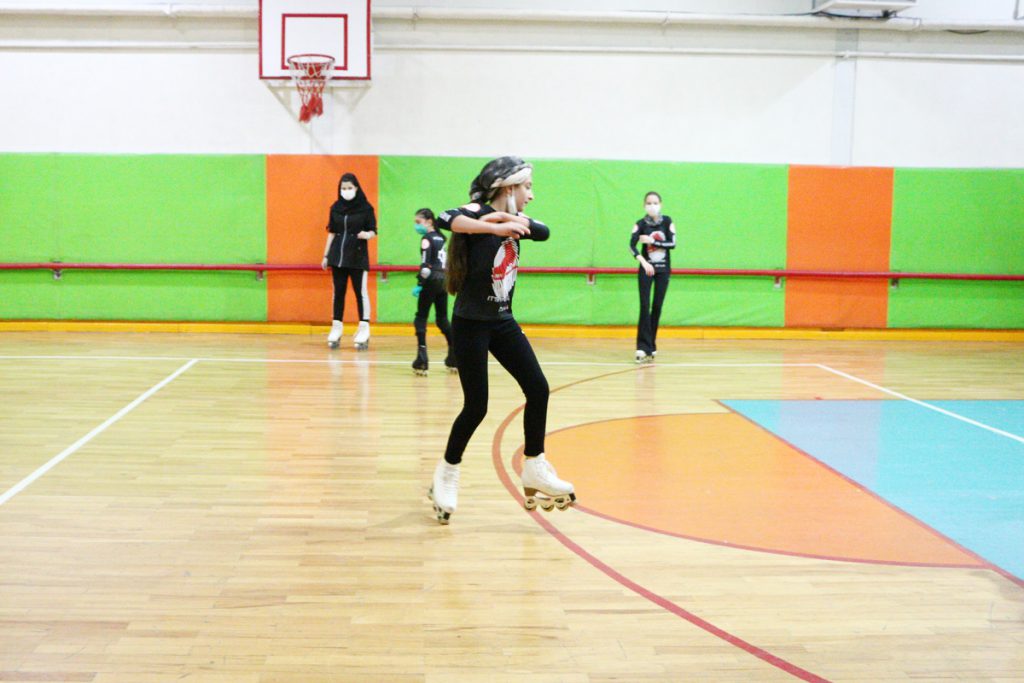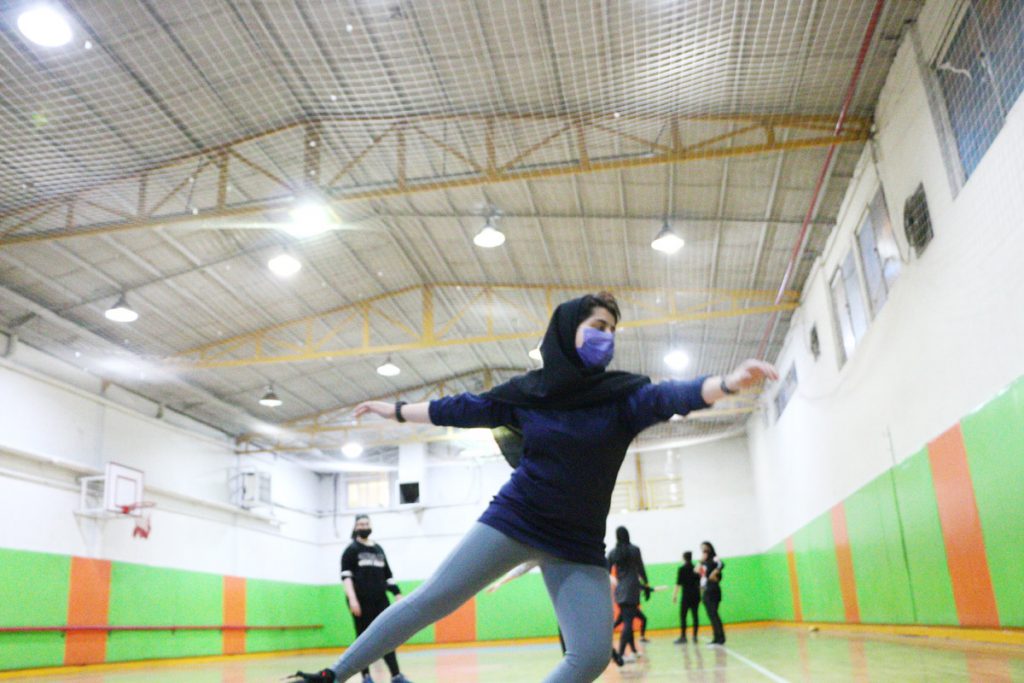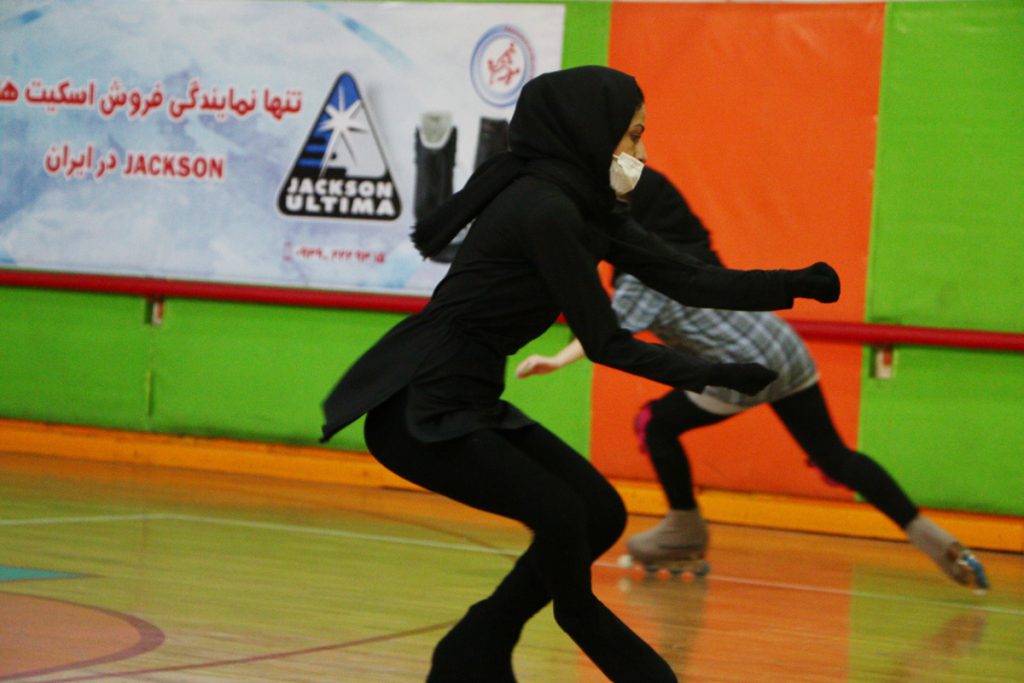Figure (artistic) skating
Figure (artistic) skating would definitely be considered as the most eye-catching specialized field of skating. The athletes being lively and vibrant during the performance, performing very hard and difficult movements on specialized figure skating shoes, which are often done on one foot and sometimes only on one wheel, requires high physical strength, especially in the legs. When these very difficult movements are performed in a rhythmic way and in harmony with the music, it makes the eyes of every viewer stare at this field.
This field of skating can be started from the age of 4 and like all specialized field of skating, the main requirement is a complete mastery of skates and basic skating movements and the movements that are considered as your permission to attend figure skating classes are crossover and backwards crossover movements in both right and left directions.
(In recent years, in our country, the word artistic has been used instead of the word figure, which in this article we will also use the same word. Artistic skating and figure skating are the same and there is no difference between them.)
Inline artistic (figure) skating is a sport that is very similar to ice skating in terms of design and technical structure, with the difference that inline figure (artistic) skating uses inline frames (linear inline wheels) instead of ice frames.
In general, the field of figure (artistic) skating can be applied in three different ways, the first difference that can be understood is the frames used in these three forms.
Ice skating (on ice): in which ice blade and frames are used that are special for ice.
Quad figure (artistic) skating (four-wheels): The skate frame in this field is designed in a way that two wheels are designed parallel in front and two parallel wheels in the back of the skate. Quad skates can be called the most traditional and oldest ice skating which is performed off-ice.
Inline figure (artistic) skating: in which a frame with linear inline wheels is used. In the past, these frames entered the market with four wheels, and gradually, with the development of knowledge and technology, these types of frames are often entered to the market with three wheels, and in this article, we will comprehensively discuss inline figure (artistic) skating.
Inline figure (artistic) skating has been officially included in the World Championships since 2002 in Wuppertal, Germany.
Competition in different forms of figure (artistic) skating (ice skating, quad, inline) is separate and not equal, and for example, an athlete in the ice field will never be compared to an athlete from inline skating. Due to the very high similarities between all three forms of figure skating, most athletes of the ice field first entered figure skating with wheeled skating shoes, or vice versa.
Inline figure skating is often more difficult than ice skating because ice skating allows the player to use deeper edges to make jumps and perform movements such as lutz and excel to make it easier to get off the ground. Also, inline skating is heavier than ice skating, which makes jumping a little harder.
Beginning figure (artistic) skating training is with stroking and then the inside and outside edges of both feet back and forth.
Teaching the outside and inside edges is one of the most important and basic movements in figure skating and must be properly taught when one enters this field so that the person can perform correctly. Popularly, the correct movement on the inside and outside edges of both feet and moving forward and backward is the first step of the figure skating field.
crossover and backwards crossover with artistic style as well as doing light and simple jumps are the next movements at the basic level of figure skating that one must learn.
Figure skating competitions are held at different levels and in different age groups. To participate in the most elementary level, which is level 4, according to the talent, interest, age and the level of skill acquisitioned by the individuals, practice and effort between 6 months to 1 year is required.
In Iran, figure (artistic) skating competitions are held regularly at different levels between clubs, provinces, countries and internationally and in different age categories.
It should be noted that in this field, you can undergo training with ordinary shoes for up to 2-3 semesters, and after this period of time and as the trainings become more difficult, the need to prepare specialized shoes for figure skating is felt more than before.
Figure Skates
The skates consist of a boot and a blade.
Figure skates are three-wheeled, and at the beginning of the skate, there is a brake called “toe”, which is used to start more movements.
The frames are made of aluminum. Their quality is very important and according to the market in the country, we recommend that you use original and valid frames.
Boot models also have different degrees of stiffness, according to the size of the foot and the weight of the player. If the foot size is larger and the player weighs more, more pressure will be exerted to the boot during the performance. And if the boot with a proper degree of stiffness is not used, the possibility of injury to the foot increases and the boot is tilted and broken.
In general, the larger the foot size, the higher the stiffness of the boots must be.
Unfortunately, due to the high price of original skating shoes, some profiteers have started to produce non-standard shoes and import them from China and due to the non-observance of engineered elements in designing original figure skates, they cause irreparable damage to people’s feet.
The original brands of figure skates are mostly Italian and Canadian, which are offered in different models and at more reasonable prices, while there is a market for second-hand shoes for those who outgrow their skating shoes.
People’s training in figure skating is done in two ways; with skating shoes and without skating shoes. One of the tools used in skating without skating shoes training is a spinner. This tool is very effective for training different types of spins and of course training for controlling the center of gravity in performing spinning movements.
Figure Skating Frames
As we mentioned, figure skating can be performed in three different forms: ice, quad and inline, the main difference of them is the skate frame used in these three categories.
The frames of the figure skating are prepared separately and are attached to the boot of the figure skating with screws, which should be mounted by a professional skate technician. These are three-wheel frames, to which a device called a toe is attached to the front. Novices equate this device with a skate brake, which is completely wrong. Toe is a device for doing some jumps such as flip and toe loop and etc.…. The skater also uses it to stop himself from moving backwards.
Frames are often made of aluminum and have different brands with different qualities and in Iran, Pro frames, Snow White frame, Schneider frame and roll line are the most well-known names in this field and have different prices according to the quality of construction.
Figure Skating (artistic skating) Jumps
One of the movements in figure skating, the correct performance of which will be accompanied by gaining points for the players of this field, jumping. There are different types of jumps, and certain principles must be observed in doing each type of jump. In previous articles that we introduced specialized skating shoes in the field of inline figure skating, we mentioned a device called toe stop at the front of the frames of figure skating. This device, in addition to playing the role of a skate brake when the player moves backwards, is used to do some jumps, which are called Toe Jump. There is another type of jump in the field of figure skating that players do not get help from their toe stop to do this type of jump, which is in the family of Edge Jump.
A general rule applies to all types of jumps. The player moves with one edge of one foot, gets ready to jump, starts spinning in a suspended position, and finally lands on the ground with the edge of one foot. To follow this general rule, players jump in only one direction in all jumps and spinning, either clockwise or counterclockwise. But most players prefer to move counterclockwise in jumps. This may be due to a better landing with the outer edge of the right foot, which will be easier for them.
Jumps in figure (artistic) skating earn points (GOE) according to the quality of the performance. These movements have different basic points according to their difficulty, and also in different types of jumps, the player’s speed, the skill in performing the movement and doing the jump with greater height are important factors for the referees to evaluate and score the players’ jumps. If players use the wrong edge or make a mistake while performing the move, they will lose points.
Jumps are also classified by the number of revolutions of the players in the air, during which it is determined that the jump is a single, double, triple, or quadruple. In world competitions, most players and champions of this field jump three or four rounds in the air, which doubles the pleasure of watching these competitions and performing the program of these players for the viewers.
Waltz Jump is the simplest type of jump in which the player jumps in a half-leap. This type of jump is not classified as a single, double, triple jump, or quadruple.
As we mentioned, in general, jumps are done in two ways with the help of Toe Stop and without the help of it, which we will discuss its types and general introduction of these type of jumps.
Toe Jump
Different types of these jumps that can be performed with the help of Toe Stop are divided into two groups. The easiest jumps and also the lowest score to the highest score are: the toe loop, the flip, and the Lutz, respectively.
Toe Loop: Players move backwards with the outside edge of the right (or left) foot to the back and move in a semicircle way, jumping with the help of the toe stop of the opposite foot.
Flip: It is also called toe salchow. In this move, the player moves through the inside edge of the left foot and like the previous movement, jumps with the help of the toe stop of the opposite foot.
Lutz: This movement is similar to Flip Jump, with this difference that the players must use the outside edge of their left (or right) foot to move in order to start their jump.
As mentioned, most of the jumps by the players are counterclockwise and for landing, the player uses the outside edge of the right foot while moving backwards.
Edge Jump
This form of jumping is included in the category of jumps without using the toe stop. The lowest to highest scores are: Salchow, Loop and Axel, respectively.
Salchow: To do this type of jump, the players move backwards through the inside edge of the left (or right) foot and draw a circle with the edge of their skate and jump with their opposite foot.
Loop: In this movement, players use the outside edge of the right foot to move backwards and jump with the opposite foot. This type of jump is also known as Rittberger Jump.
Axel: This is the only spinning jump that requires the player to jump into the air while facing forward that’s why it requires an extra half revolution. In this type of jump, the players move forward using the outside edge of the left (or right) foot and then get ready to jump.
In explaining the jumps in the category of jumps without the help of Toe Stop, it should be noted that all three of these types, are based on assuming the players jump and spin counterclockwise, their landing using the outside edge of the right foot while moving backwad.
Doing each of these jumps will require time and continuous practice. If you are training in this field or you are interested in attending figure skating training classes, it is very important for you to understand that performing these movements requires a long-term training and your long training experience. In addition to your perseverance, your patience also plays an important role in your success.

